How the 1,000-year-old lion dance has moved with the times
Lunar New Year is the busiest time of the year for the troupes who spend months perfecting ever more daring routines.
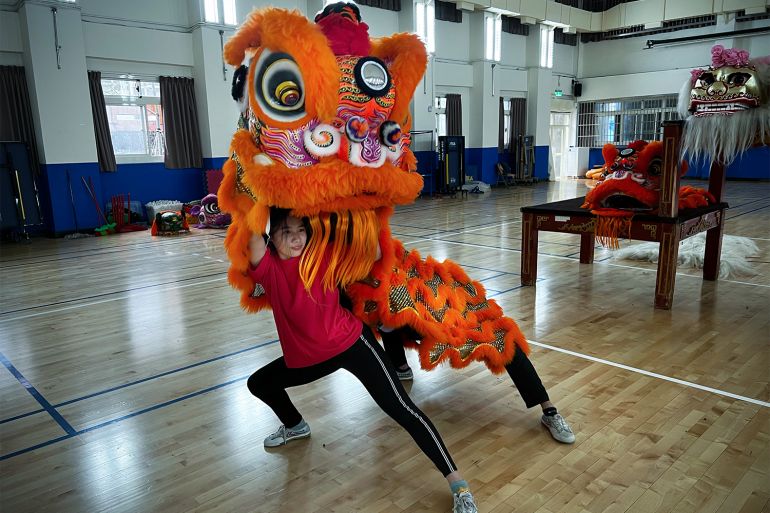
Taichung, Taiwan – First come the practice drills to warm up as a dozen young men – and one woman – kick, sweep and pirouette to the beat of a large traditional drum. Then they take turns performing the same moves while holding a large lion mask – which threatens to engulf some of the younger students completely.
A few then practice in pairs – one holding up the lion’s head while the other, bent over and covered in fabric, follows in step to create the effect of an animal brought to life. Eventually, the dancers will also need to manipulate the puppet’s face as they move, so it blinks and opens its mouth like a real animal. By the end of every two-to-three-minute routine, everyone is out of breath.
Keep reading
list of 3 itemsLittle cheer for Year of the Tiger in Hong Kong as COVID bites
Ahead of Lunar New Year, Thailand’s poor feel sting of inflation
“This is blocked practice. We teach them a new movement and they practice 10 times together,” said Chen Chung-yu, who chairs the department of physical education at National Taiwan Sport University in addition to coaching students in the lion dance.
The point, he says, is to give students a sense of how to improvise by testing out different combinations of movements.
Lion dances are one of the most iconic performances in the Chinese cultural world and are held throughout the year to mark religious festivals and bring luck. The Lunar New Year, however, is the busiest time of the year and with the start of the Year of the Tiger, many performers have been preparing for weeks for back-to-back performances.
Tradition as a team sport
For many of Chen’s students, the lion dance is a cross between a team sport and dance class.
Taiwanese students begin practising at a young age, much like tennis, football, or gymnastics.
“My family didn’t know what to do with me,” said university student Chen Zhenyuan, describing his energetic personality as an eight-year-old. So his parents signed him up for lion dance.
His past training focused on variations of the lion dance from southern China like the iconic “Cantonese” style, whose furry, full-headed mask can be seen on streets from Hong Kong to London chasing away bad luck. The performance is often highly interactive, with the audience giving gifts to the lion as the performers make the animal flirt and pose to the beat of the drums and the clash of the cymbals.
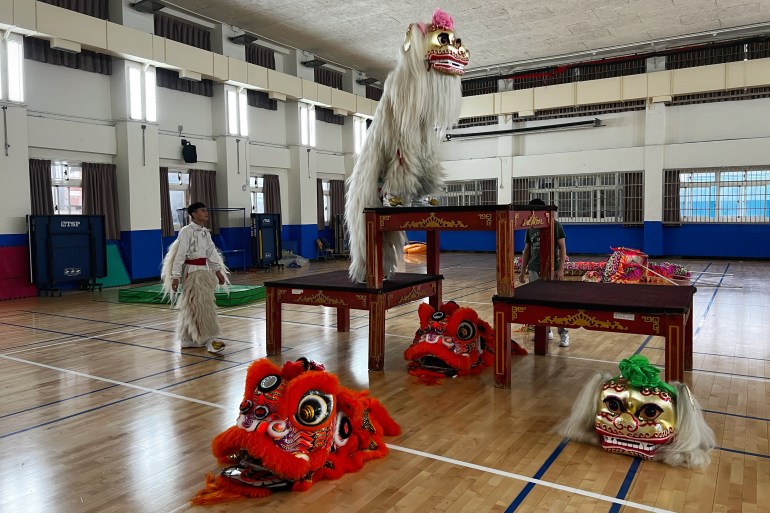
Now that he is older, Chen has finally started learning the more acrobatic northern Chinese or Beijing-style dance, where a pair of performers jump together in unison on and off stacked table-like platforms, mimicking the movements of an agile and enormous big cat.
There are competitions from school up to the international level with a World Championship in the Malaysian highland resort of Genting every two years.
The strength and agility required for some performances are one reason why university student Qiu Zifang suspects she is one of the few women at practice beyond two female instructors. Qiu, who first saw the lion dance at a local temple near her home, was inspired to join her high school team and won several medals.
She says that “because this is a kind of folk custom, there are more men”, in keeping with the gender stratification found across traditional Chinese culture. In Taiwan, at least, this attitude has changed as many school teams now receive government funding.
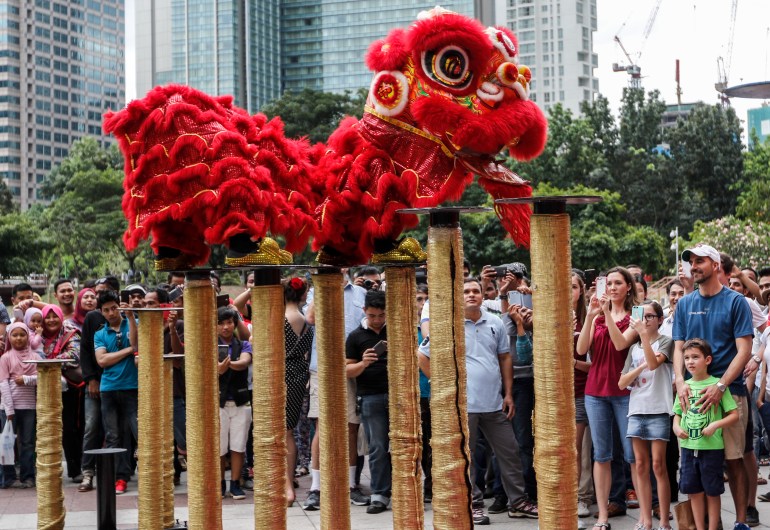
Chen’s students also get the chance to learn the Taiwanese Hoklo and Hakka styles, which come from two of the island’s first Chinese ethnic groups. Movements in both variations echo the dance’s martial art roots as it was once practised by early immigrants to keep up their physical fitness and fighting skills, much like the Taiwanese folk martial art Songjiang Zhen or the Songjiang Battle Array, Chen said.
Innovations
At competitions, performances are typically divided into “northern” or “southern” lion dance to standardise the judging, but there are a huge number of variations based on location, cultural background, and even a particular lion dance master, said Tsun-Hui Hung, a Taiwanese musician and academic who has written about the history of Taiwan’s lion dance for the scholarly non-profit Association of Asian Studies.
“Chinese culture is not just one big culture, it’s more like an umbrella term. So, you have something called the ‘lion dance,’ but then the decorations and the way they do the steps are so different from location to location,” she said from her home in Hawaii, where she is also a well-known musician who plays the erhu (a traditional two-stringed instrument played with a bow) and often performs alongside lion dancers.
“In Taiwan, back in the 1800s, people practised lion dance because they wanted to have physical training, but then for other regions, they really just want to (perform) to bring good luck for to community, so they all have different reasons,” Hung said.
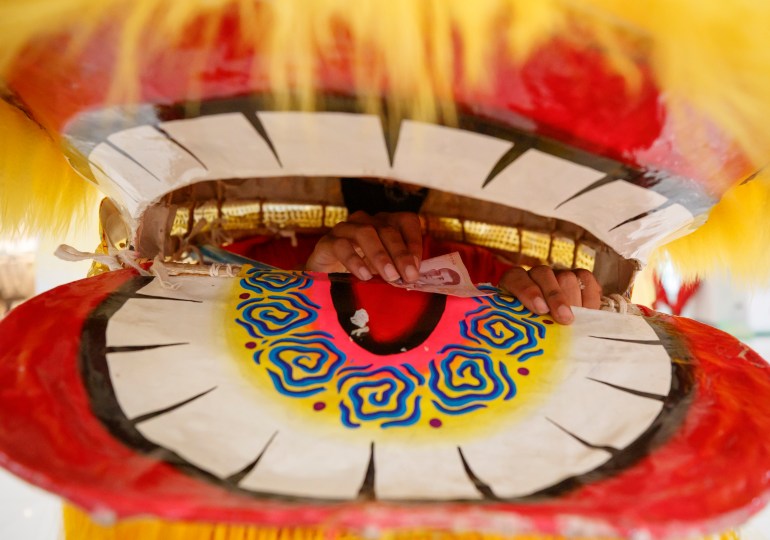
The development of the 1,000-year-old lion dance has benefitted from the huge Chinese diaspora, with overseas Chinese and Taiwanese keeping the tradition of lion dance alive when it was banned during China’s Cultural Revolution, while also adding their own spin.
Malaysian and Singaporeans masks are valued by many performers because they are made with lighter materials than the originals, while Malaysians are widely credited with developing a stunt where performers jump between high, narrow poles – sometimes over water.
Once a performance staple in Southeast Asia, the popular trick is performed in competitions around the world and has even made its way back to China.
Taiwanese melting pot
Many Taiwanese troupes also have a distinct flavour of their own thanks to the island’s unique immigration patterns, said Wang Qing-zhong, who heads the four-generation Ching Ho Kuang Lion Dance Troupe in Taipei’s Wanhua district.
Taiwan’s first immigrants originally hailed from Fujian but, at the end of the Chinese Civil War, millions of refugees fled to the island, bringing with them cultural practices from across the country. For the first time, people who had been isolated in different provinces suddenly found themselves living side by side for the first time.
As the first in his family to study lion dance, Wang’s father learned a hybrid style from the southern Guangdong and Guangxi provinces because its founding members – two military officers seeking to keep fit – created a single hybrid troupe that united styles from different provinces.
While the founders originally taught only students born in China, they eventually allowed in Taiwanese members like Wang’s father as old and new arrivals began to blend together, not only in cultural activities but also across Taiwanese society.
The Ching Ho Kuang Lion Dance Troupe has continued the Guangdong-Guangxi tradition even though their family originally came from elsewhere in China, but Wang says a similar pattern was repeated across Taiwan as styles became “mixed up together.”
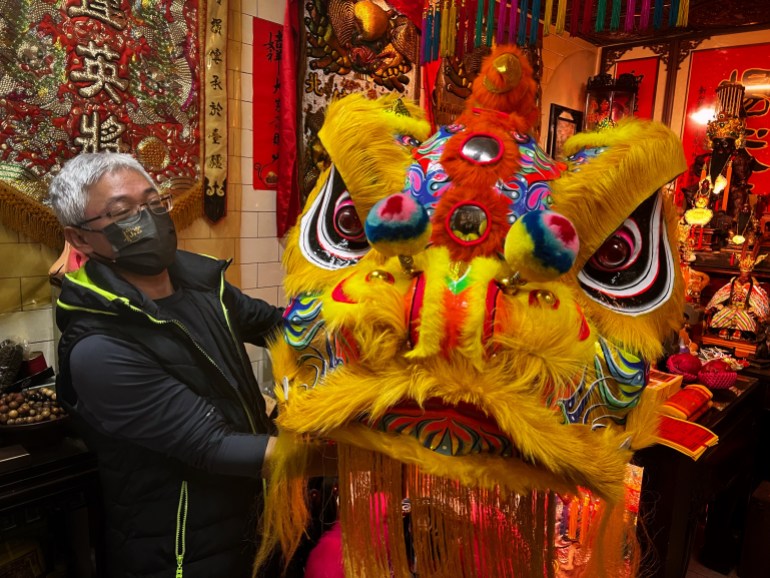
This mixing and cultural exchange between lion dance troupes continue to the present day, thanks to technology.
From sharing VHS tapes of performances in the 1980s to the arrival of the internet in the 1990s and 2000s, the lion dance has kept evolving.
“The practice is proliferating because you can watch a YouTube video of this and learn how to do it and it’s really easy to go online and buy the equipment, whereas before you had to go in person to find someone to teach you,” Wang said.
In Taiwan, the method of choice for learning lion dance still appears to be joining a troupe or studying it in school, but as the Year of the Tiger gets under way, every type of lion dance will be on show around the world.